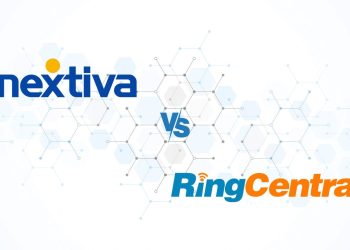For large organizations looking for next-generation firewall solutions, Check Point and Palo Alto Networks are two of the top providers today.
SEE: SentinelOne vs Palo Alto: Compare EDR Software
Check Point’s Quantum NGFW offers AI-powered threat prevention and a highly scalable solution that can adapt to enterprises and businesses of all sizes. On the other hand, Palo Alto Networks NGFWs provides deep learning capabilities designed to track evasive threats, as well as offer powerful security controls across multiple environments.
While both are quality options in their own right, there are key differences that may make one NGFW better for your business than the other.
In this article, we take a look at Check Point and Palo Alto NGFWs to see which one is best for you and your business.
AppTrana Employees per Company Size
Micro (0-49), Small (50-249), Medium (250-999), Large (1,000-4,999), Enterprise (5,000+)
Any Company Size Any Company Size
Features
Advance Monitoring, Behavior Based Layer 7 DDoS Protection, Bot Mitigation, and more
Check Point vs Palo Alto: Comparison table FeatureCheck Point NGFWPalo Alto Networks NGFWs Standout security featuresFirewall cluster design.High-quality threat prevention.Robust centralized management capabilities.Extensive range of firewall form factors.In-depth traffic visibility.Malware analysis and reporting. Security effectiveness99.80% (Cloud NGFW)100% (Cloud NGFW) AI / machine learning-based threat protectionYesYes Ease of use (Gartner Peer Insights)4.4 out of 54.6 out of 5 Free trial or demo availableProduct demo available and free trial availableProduct demo available; free 30-day trial available for Cloud NGFW Starting priceStarts at $890Starts at $1,400 Visit Check Point
Visit Palo Alto
Check Point and Palo Alto pricing Check Point NGFW pricing Check Point’s Quantum NGFW and Security Gateways vary in pricing depending on hardware and software specifications. They’re also dependent on your organization’s size and security needs, given how Check Point offers different appliances for different business sizes.
SEE: Top 8 Advanced Threat Protection Tools and Software Choices for 2024 (TechRepublic)
Per my research, Check Point NGFW hardware starts at around $890 for an entry-level firewall appliance and goes up as you move towards their higher-end products.
Fortunately, Check Point has a fairly accessible product catalog page where users can view all their gateway solutions with their corresponding prices. Keep in mind, however, that you will need to create an official Check Point account to access this.
Check Point also offers free trials and product demos through their official website upon user request.
Palo Alto Networks NGFW pricing Pricing-wise, Palo Alto Networks NGFWs is on the more expensive side as it focuses on offering a good amount of security features out of the box. Like all NGFW providers, pricing depends on the particular hardware and software package you purchase.
SEE: Best Secure Access Service Edge Platforms in 2024 (TechRepublic)
I highly recommend contacting them directly to get a proper price quote per your business’ needs. That being said, Palo Alto’s hardware ranges from around $1,400 to $4,100 for higher-end appliances.
Fortunately, they offer a free trial of their cloud NGFW for both AWS and Azure. They also have official product demos for their NGFW, which can be requested on their official website after you provide some basic information.
Check Point vs. Palo Alto: Feature comparison Security features Both Check Point and Palo Alto Networks NGFWs provide a ton of quality security features built to protect business and enterprise environments.
SEE: 10 Myths about Cybersecurity You Shouldn’t Believe (TechRepublic Premium)
Check Point’s Quantum Security NGFW prioritizes scalability with its impressive firewall cluster design, allowing businesses to build on top of a starter system and add up to 1 terabit per second of threat prevention.
Check Point’s firewall cluster design diagram. Image: Check Point Software YouTube channel Check Point also has unified policy capabilities that enable administrators to enforce granular rules and user-based policies from a single console — making it an easy experience to ensure protection for complex org structures. Finally, it also comes with strong threat prevention against zero days and other threats using its AI-based engine and threat intelligence database.
Palo Alto Networks NGFWs doesn’t skimp out on features either with its wide range of firewall form factors, offering physical, cloud, virtual machine and container firewall products. This makes Palo Alto adaptable to many types of enterprise sizes and requirements.
Palo Alto Networks’ firewall management console. Image: Palo Alto In addition, their NGFW comes with traffic visibility, achieved through in-depth logs, reporting and notification mechanisms that cover all security events and traffic within a network. This enables IT teams and managers to spot any developing vulnerability or hidden threat in a system.
Lastly, Palo Alto Networks NGFWs has their WildFire malware analysis and reporting feature that develops insights on all malware that passes through their firewall. This helps develop better knowledge and practices within an organization by understanding risks and threats as they appear.
Performance and independent test results Both vendors provide excellent performance per independent security testing. In CyberRatings’s 2024 Cloud Network Firewall test, Check Point and Palo Alto Networks NGFWs were marked as “Recommended” solutions for their security effectiveness.
Security effectiveness, according to CyberRatings, refers to a NGFW’s threat and exploit prevention, overall reliability and stability, policy enforcement and TLS/SSL functionality, among others. The two solutions were among six products to get this mark out of 11 total NGFW providers evaluated in the test.
However, Palo Alto’s Cloud NGFW does gain a small advantage against Check Point in their final effectiveness scores. In particular, Palo Alto Networks VM-Series NGFW scored a perfect 100% in security effectiveness, while Check Point’s CloudGuard service scored a very respectable 99.80%.
Both vendors also recorded very similar rated throughput (Mbps), with Palo Alto notching 1,036 Mbps and Check Point having 1,180 Mbps.
From these results, it’s clear that Check Point and Palo Alto Networks NGFWs are able to provide similar, high-quality firewall solutions. That being said, Palo Alto’s higher effectiveness score of 100% does give it the edge over Check Point’s NGFW.
Ease of use When it comes to ease of use, Palo Alto slightly wins out against Check Point’s NGFW, according to reviews posted on Gartner Peer Insights. In particular, Palo Alto was rated 4.6 out of 5 on ease of use, while Check Point garnered a decent 4.4 out of 5.
One user on Gartner highlighted how Palo Alto’s “single pane of glass viewing” allows for seamless management of multiple environments. This can be crucial for managers who want a clear view of all events and tools relating to their firewall solution.
On the other hand, a few Gartner reviewers emphasized that Check Point’s NGFW has a decent learning curve with its software. However, they did note that once the basics are learned, it becomes relatively easy to use. While intuitiveness can be subjective, this is worth mentioning if you’re planning to invest in Check Point’s firewall.
Check Point NGFW pros and cons Pros Good scalability for various business sizes. Granular policy capabilities. Powerful centralized management. Cons Can be hard to learn and configure. Palo Alto Networks NGFWs pros and cons Pros Higher security effectiveness in 2024. Numerous firewall form factors to choose from. Relatively easy to use. Cons More expensive starting point. Should your organization use Check Point or Palo Alto? Both Check Point and Palo Alto offer compelling security capabilities as top NGFWs in 2024. That being said, I find that Palo Alto Networks NGFW edges out Check Point for its slightly higher security effectiveness and highly rated user experience.
In my view, Palo Alto Networks NGFWs is best for most enterprises, with its strong threat protection and abundance of features. It’s also telling that many users find their solution the “go-to” pick, even with the more premium price tag.
That’s not to say that Check Point isn’t a good choice as well. With its feature set, Check Point’s Quantum Security NGFW is best for businesses that envision quick changes and rapid growth. These types of organizations will benefit from Check Point’s firewall cluster design and its robust management capabilities as their security requirements increase and evolve as time goes on.
Methodology My comparison of Check Point and Palo Alto Networks involved an extensive evaluation of their security capabilities, features and real-world value to businesses.
This analysis was based on in-depth research of the NGFW documentation, official product materials and feature inclusions compared to other products on the market.
Finally, I also considered real user feedback from reputable review sites to round out my recommendations. This was done to reflect real-world sentiments and experiences of these products, on top of just an on-paper evaluation of their included features.










Be First to Comment